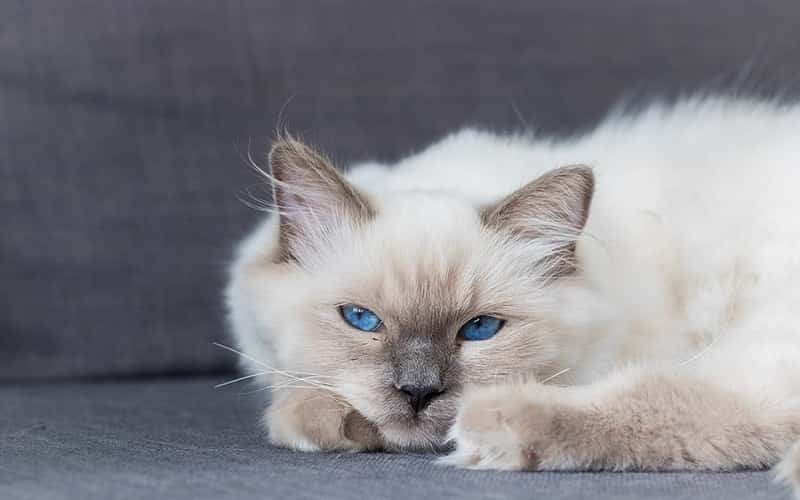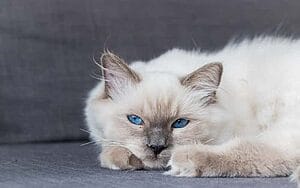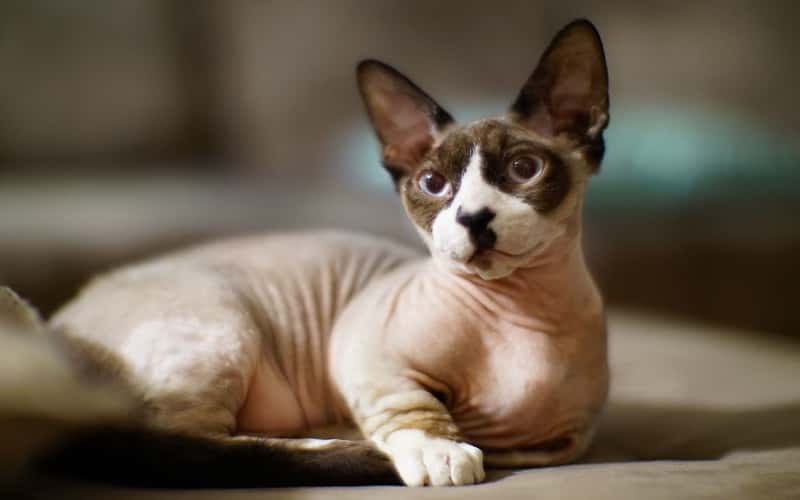Colorpoint Shorthair – Mixed Cat Breed Characteristics & Facts

A devoted and obedient cat, the Colorpoint Shorthair will pout and pine if given little or no attention.
See all the qualities of the Colorpoint Shorthair below!
Colorpoint Shorthair – Mixed Cat Breed Picture




Colorpoint Shorthair – Mixed Cat Breed Characteristic
Affectionate with Family | ***** |
Amount of Shedding | ** |
General Health | ** |
Potential for Playfulness | ***** |
Tendency to Vocalize | * |
Kid-Friendly | **** |
Friendly Toward Strangers | |
Easy to Groom | **** |
Intelligence | **** |
Pet Friendly | **** |
Vital Stats:
| Life span: | 12 to 17 years |
| Length: | Small to medium |
| Weight: | 5 to 10 pounds |
| Origin: | England |
History
A Siamese with non-traditional colors is known as a Colorpoint Shorthair. The breed was created by starting with a Siamese and adding a red American Shorthair to it to add a new color. The cats served as the foundation for a new breed, the Colorpoint Shorthair, because they were successful and appealing. Other unconventional hues eventually emerged. In 1964, the Cat Fanciers Association approved the breed.
The Colorpoint is not a distinct breed, according to the International Cat Association, but rather a variation of the Siamese.
Size
Medium-sized colorpoint cats typically weigh 5 to 10 pounds.
Personality
The Siamese and the Colorpoint Shorthair may have different coat colors, but they are the same underneath. The Colorpoint Shorthair likes to talk and express her opinions. In a loud, raspy voice, he will express his opinions to you exactly, and he expects you to pay attention and follow his advice. The people they live with are very dear to colorpoints.
They enjoy being “helpful” and will follow you around and keep an eye on everything you do. A Colorpoint Shorthair will sit on your lap when you are sitting down, and at night he will be in bed with you, likely with his head on the pillow and under the covers. If you would go insane living with a chatty annoyance, do not purchase a Colorpoint.
A Colorpoint can be your best friend, however, if you enjoy having someone to chat with throughout the day. Just make sure you have time to devote to this needy and gregarious cat. Colorpoints dislike being left alone for extended periods of time, so it may be a good idea to get two of them if you work during the day so they can keep each other company. The Colorpoint is incredibly intelligent, athletic, and agile, and it enjoys playing.
Keep his active mind engaged with puzzle toys, and give him teaser toys to chase and a large cat tree to climb to get some exercise. He is fully capable of prying open cabinets and drawers, as well as searching through your purse for something fun or shiny to play with. Never leave him without any entertainment or you might return home to find that he’s changed the settings on your DVR to record only nature programs or, at the very least, decided that your tissue and toilet paper boxes look better empty.
If you enjoy spending time with and interacting with your cat, pick a Colorpoint. This cat is devoted and affectionate, but if given little or no attention, it will pout and pine. But he thrives for years in the right environment.
Health
Pedigreed and mixed-breed cats both have varying rates of health issues that could be genetic in origin. The Colorpoint Shorthair can experience the same issues as the Siamese, such as the following:
- Members of the Siamese family can develop the disease amyloidosis, which is brought on by the buildup of a protein called amyloid in various body organs, primarily the liver.
- Bronchial disease and asthma.
- Birth defects of the heart, such as aortic stenosis
- Squinted eyes.
- Digestive system disorders like megaesophagus.
- When touched or petted, cats with the neurological condition known as hyperesthesia syndrome may act frantically and overgroom themselves, causing hair loss.
- Lymphoma.
- A neurological condition called nystagmus that results in uncontrollable rapid eye movement.
- Progressive retinal atrophy, which is detectable through a genetic test.
Care
The Colorpoint’s short, fine coat requires little maintenance. Every few weeks, use a soft brush or stainless steel comb to remove the dead hair, then polish it with a soft cloth to make it shine. To prevent periodontal disease, brush your teeth. Although daily brushing is preferred, once a week is still preferable to never. To get rid of any discharge, use a soft, damp cloth to wipe the corners of your eyes.
To prevent the spread of any infection, use a different area of the cloth for each eye. Each week, check your ears. If they appear to be dirty, clean them with a cotton ball or soft, damp cloth dipped in a 50/50 solution of warm water and cider vinegar. Cotton swabs shouldn’t be used because they can harm the ear’s interior. Maintain the Colorpoint’s litter box in immaculate condition.
Cats are extremely picky about bathroom cleanliness. A Colorpoint should only be kept indoors to avoid contracting illnesses from other cats, being attacked by dogs or coyotes, and other risks that outdoor cats face, like being hit by a car. Outdoor-going Colorpoints are also at risk of being taken by someone who wants to keep such a stunning cat without having to pay for it.
Coat Design and Maintenance
With the exception of color, there is no difference between the Siamese and the Colorpoint. Both breeds have a long, wedge-shaped head that tapers from the narrow point of the nose outward to the tips of the ears, forming a triangle. The head is triangular in shape, and the unusually large ears are wide at the base and pointed at the tip. The almond-shaped eyes are of average size.
The long, slender legs that support the tubular body—often described as having higher back legs than front legs—are supported by the body. The Colorpoint’s long, thin tail tapers to a point, and it walks on small, dainty oval paws. Red point, cream point, and lynx point are just a few of the 16 colors and patterns available for colorpoints. As a cat ages, its coat frequently gets darker. Bright blue eyes are present.
Kids and other animals
the social and active Families with kids and dogs who get along with cats should choose Colorpoint. He can play fetch just as well as any retriever, picks up new tricks quickly, and enjoys the attention from kids who are kind to him. Cats and dogs that respect his authority get along with him. To make sure that pets learn to get along with one another, always introduce pets gradually and under controlled conditions.
Creator: PetsCareTip








